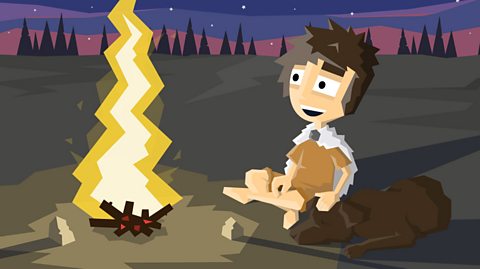What is Skara Brae?
Created in partnership with
Skara Brae is the best-preserved Neolithic village in northern Europe. It is a prehistoric settlement where an early farming community lived around 5,000 years ago.
It is a UNESCO World Heritage SiteRecognised locations or landmarks of cultural, historical or scientific significance..
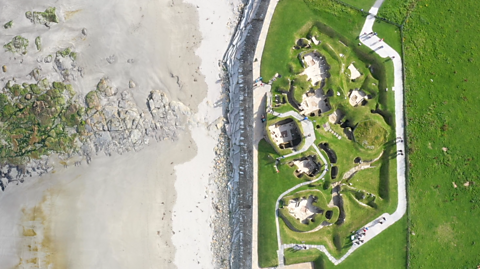
Watch: Discover Skara Brae
Pupils from Stenness Community School in Orkney visited Skara Brae to learn about its history.
Watch below to find out what they discovered.
This film is a collaboration between the L.A.B Scotland and .
Where is Skara Brae?
Skara Brae is on the Orkney Islands which are off the north coast of Scotland.
It was discovered in 1850 when a big storm blew away some of the sand covering the houses.
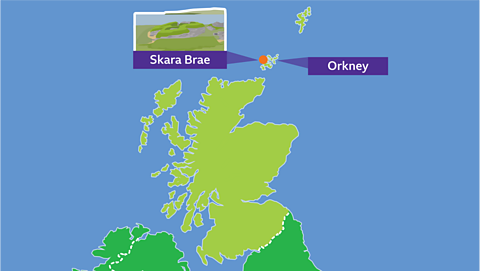
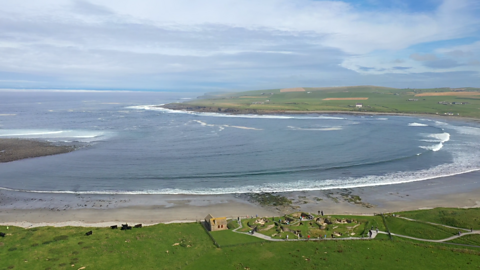
Being near the sea meant the Neolithic people would have been able to catch fish to eat, as well as shellfish like winkles and limpets.
The coastline would have been further away than it is today. Centuries of coastal erosion has brought it much closer to Skara Brae.

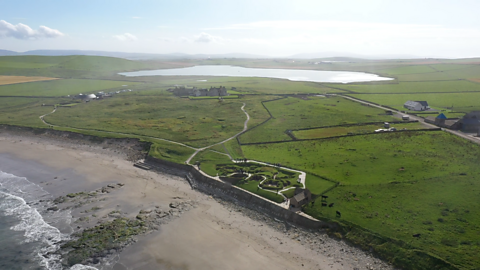
Behind Skara Brae is the Loch of Skaill. It's a freshwater loch where the people of Skara Brae could have caught trout and eels.
What are the houses like?
Most Neolithic people built houses with wooden frames. But on the Orkney Islands, there aren't many trees. Neolithic people at Skara Brae built their houses from stone.
The village is made up of a group of one-roomed circular homes.
The houses have built-in furniture made completely from stone. There are stone cupboards and beds and even stone shelves where precious objects were kept!
Today, the homes at Skara Brae are open to the air, but they were probably covered with roofs of turf and grasses.
Each home would have been linked by a set of covered passageways, so people could visit whilst keeping warm and dry.
Watch: Take a tour inside a Stone Age house at Skara Brae
What was inside a Neolithic home?
The dresser would have been the first thing you would see when you came through the door. It was clearly important. What kind of things would they have placed on it?
Well, think of what people display today in their homes - things important to them, things that make statements about them.
Though 5,000 years ago, there weren’t any clocks or picture frames. These beautiful objects are the kind of things that would have been displayed there.
As you sat on the large stone seat directly in front of the dresser, you'd have a clear view of the door and be able to see whoever crawled in.
As they entered, they'd have to look up at you. The door itself is only lockable from the inside. So when you came in here, you’d be able to shut the outside world out, have privacy.
We think a bone, or a piece of wood, could have been used to hold the door in place. But today all that remains are the holes in the stone which held the bar.
Once your guest had arrived and the door was closed, you could offer fresh fish and meat cooked on the fire. And in winter, smoked meat stored in the smoky roof space would be available.
Huge storage jars, too big to be brought in through the door, were buried in the corner of the house. The top of these pots were beautifully decorated and the area where they sat was surrounded by stone to protect them from being bumped and broken.
Who lived at Skara Brae?
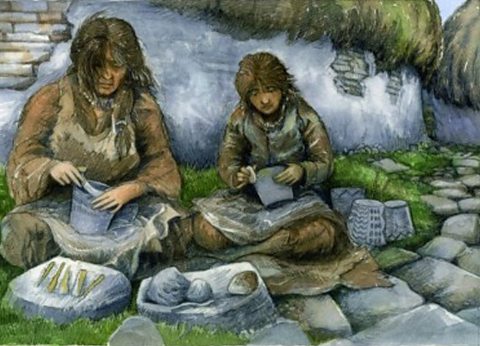 Image source, Historic Environment Scotland
Image source, Historic Environment ScotlandSkara Brae was the home of a Neolithic farming community. The people who lived here were able to grow some crops and they kept cows, sheep and pigs. These animals were their main sources of food, providing meat, milk and cheese.
They gathered natural resources from nearby, such as birds eggs, wild herbs and plants.
 Image source, Historic Environment Scotland
Image source, Historic Environment Scotland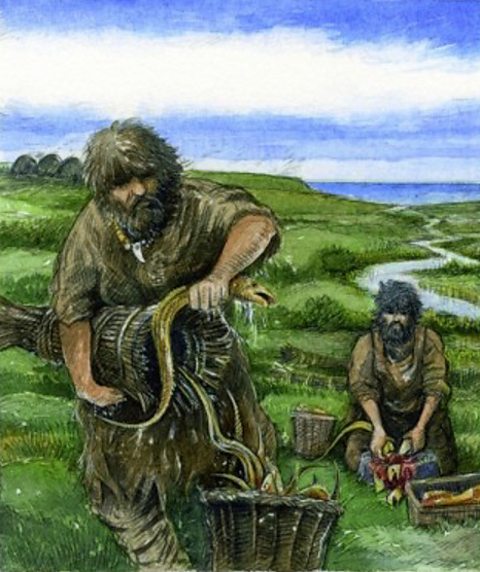 Image source, Historic Environment Scotland
Image source, Historic Environment ScotlandThe Neolithic people also hunted. They used the antlers from the deer for making tools.
They went fishing for both sea fish and freshwater fish.
They collected shellfish such as oysters, winkles and limpets.
What did the people of Skara Brae wear?
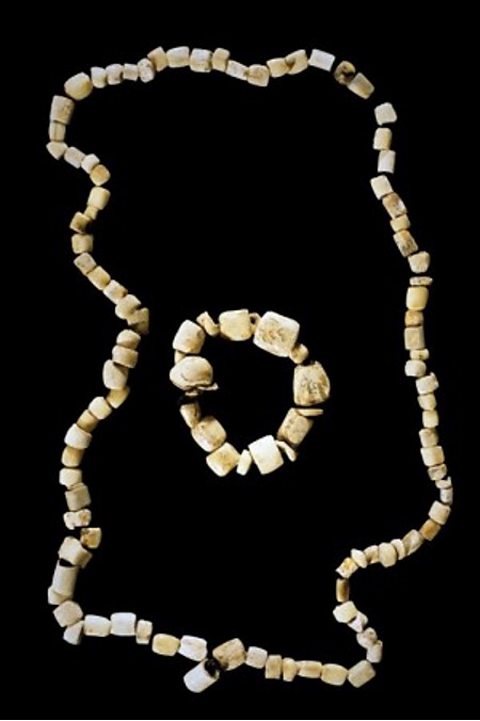 Image source, Historic Environment Scotland
Image source, Historic Environment ScotlandPeople at Skara Brae probably wore animal skins and fleeces.
Experts have found large amounts of jewellery at Skara Brae, including pins, beads and pendants.
These beads are made from the bones, teeth, antlers and tusks of animals and birds.
 Image source, Historic Environment Scotland
Image source, Historic Environment Scotland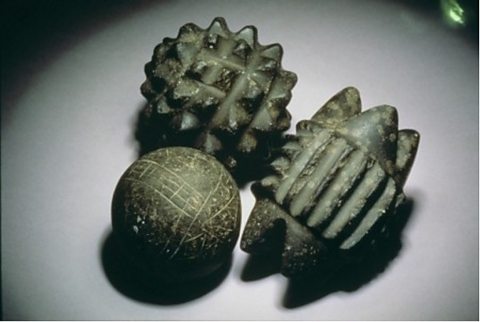 Image source, Historic Environment Scotland
Image source, Historic Environment ScotlandActivity 1: Skara Brae quiz
Bitesize Primary games. gameBitesize Primary games
Play fun and educational primary games in science, maths, English, history, geography, art, computing and modern languages.

More on Prehistoric
Find out more by working through a topic
- count12 of 21
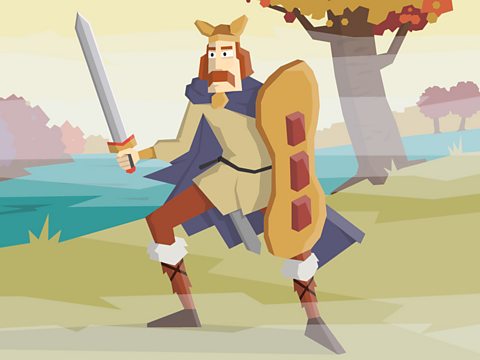
- count13 of 21
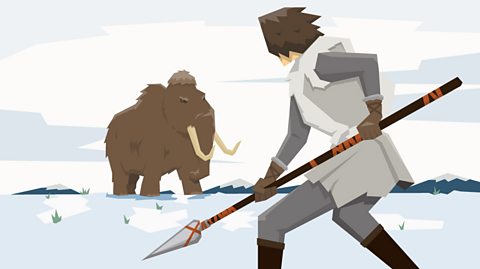
- count14 of 21

- count15 of 21
